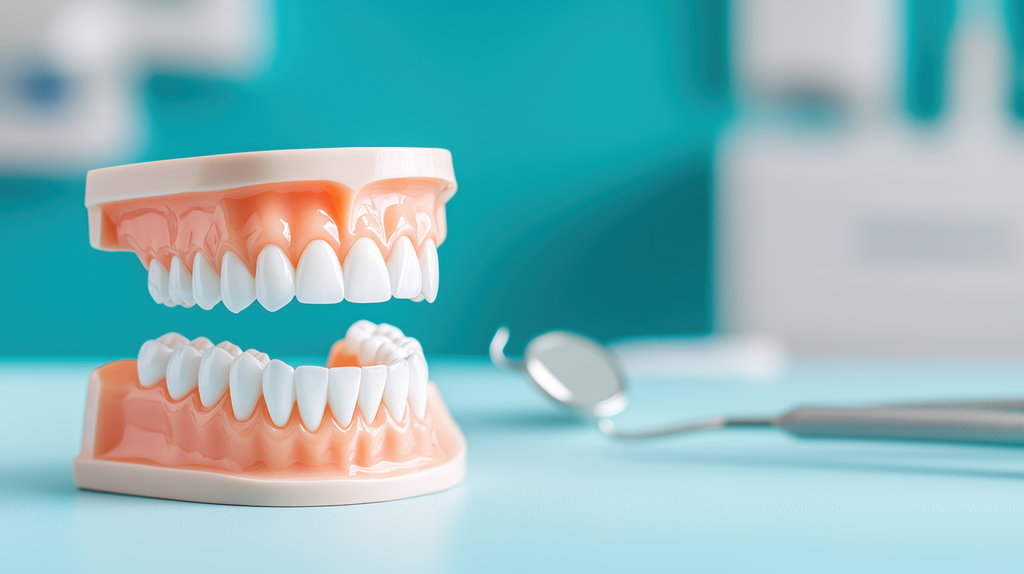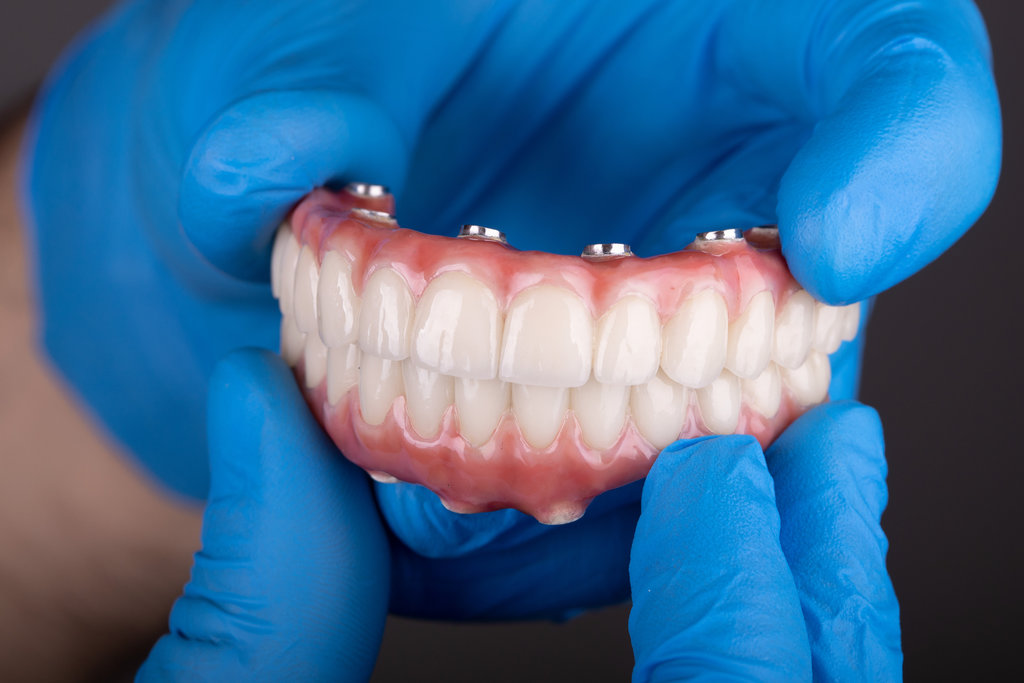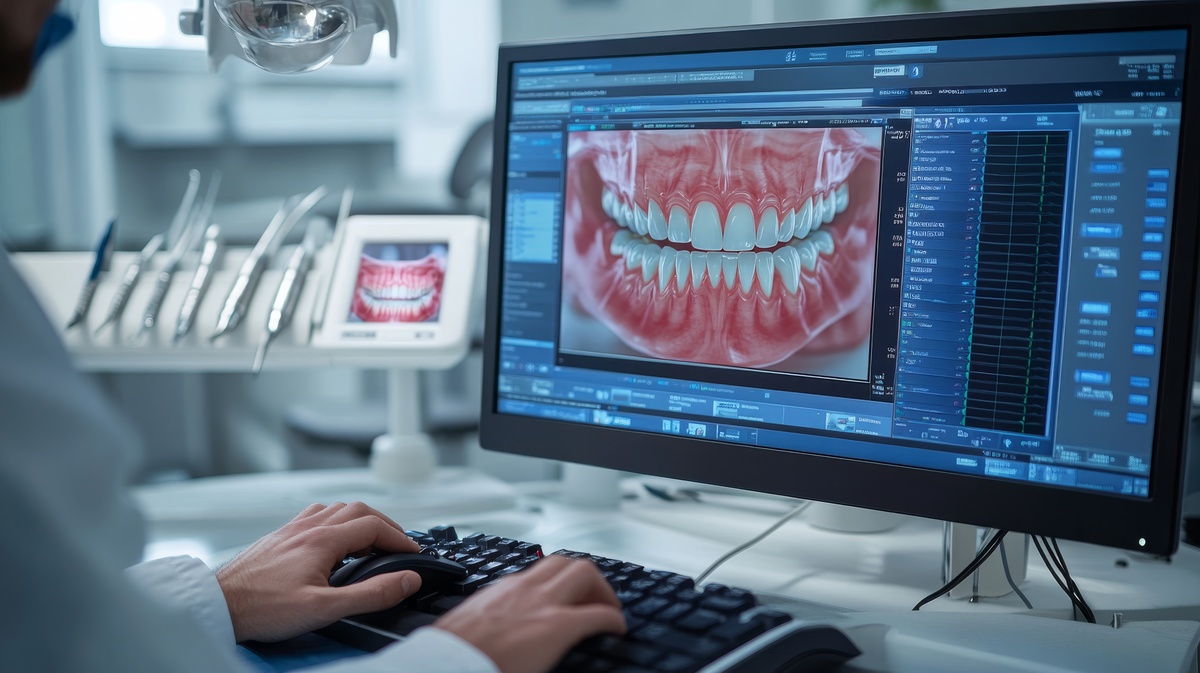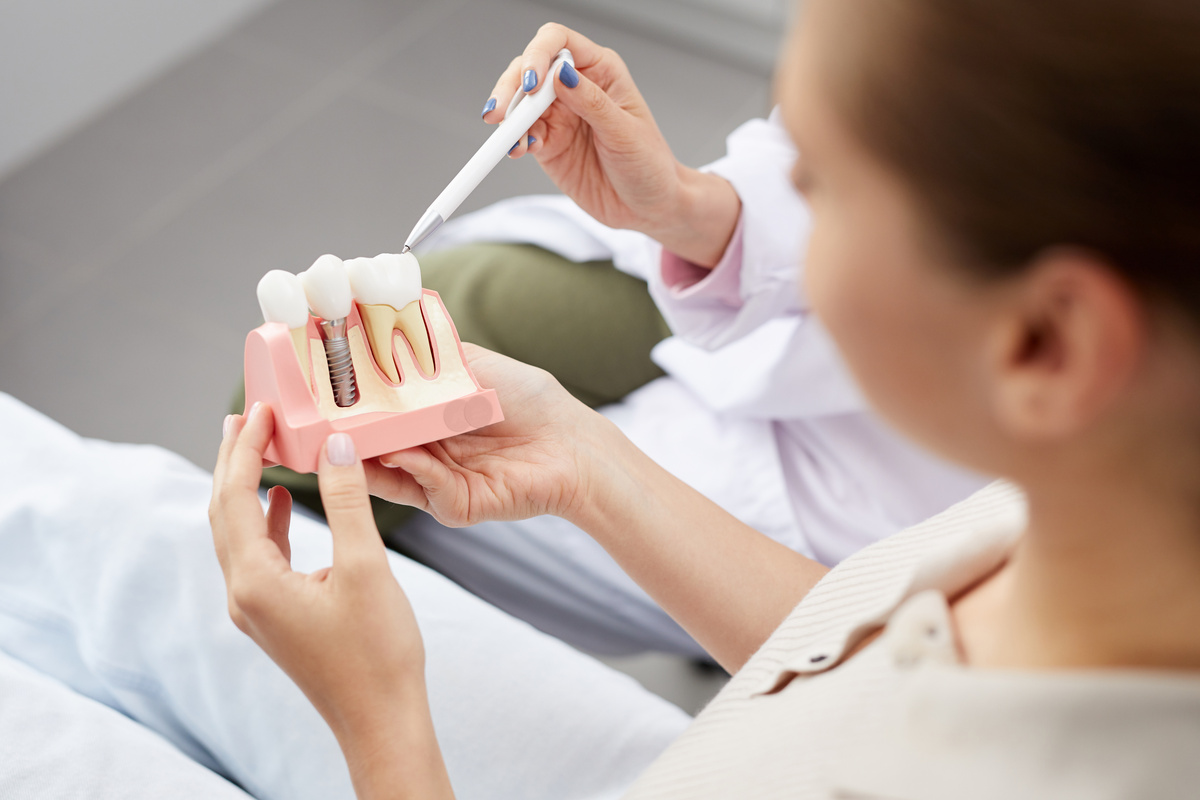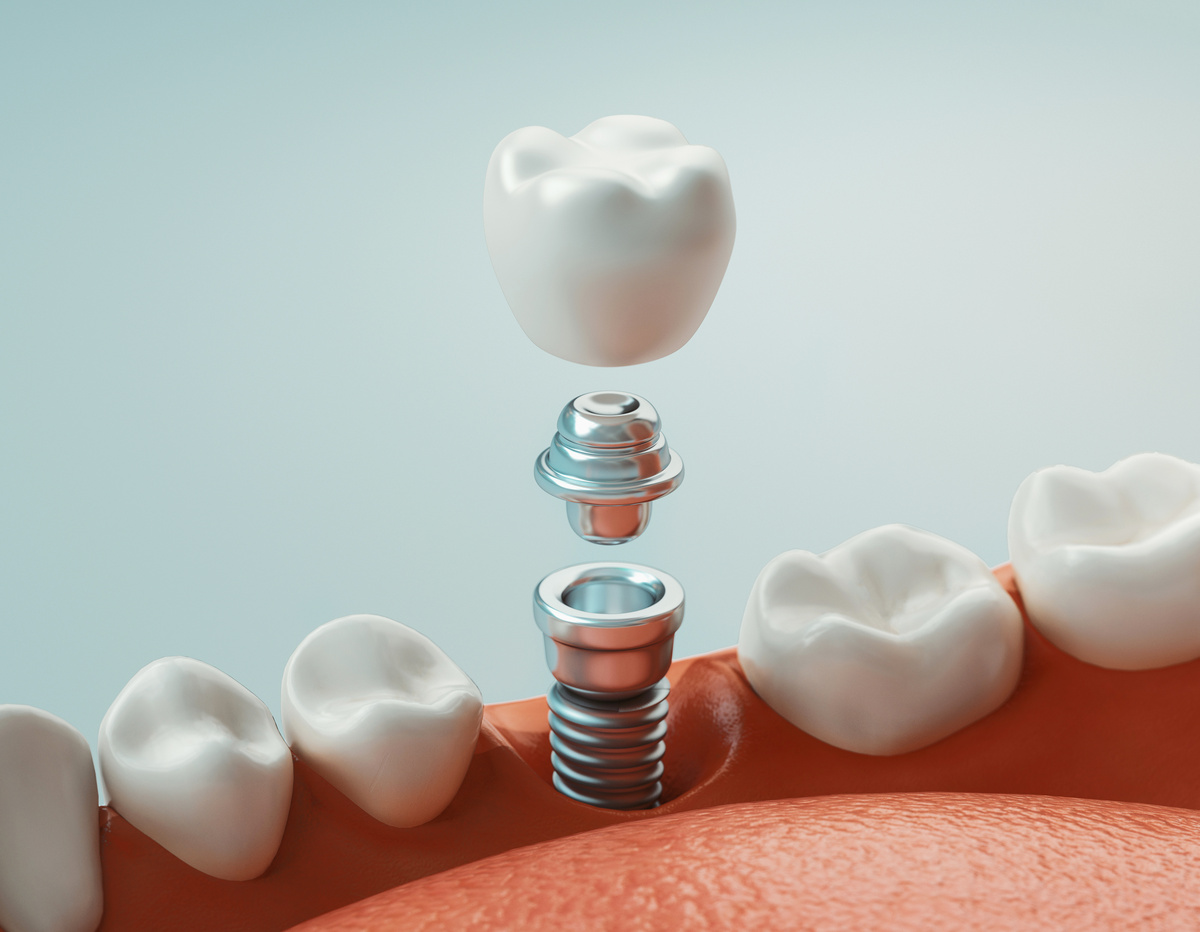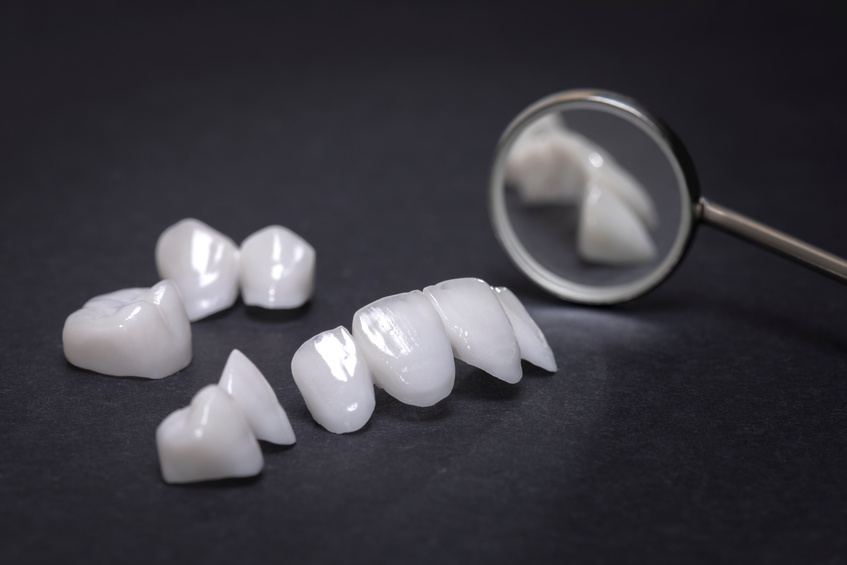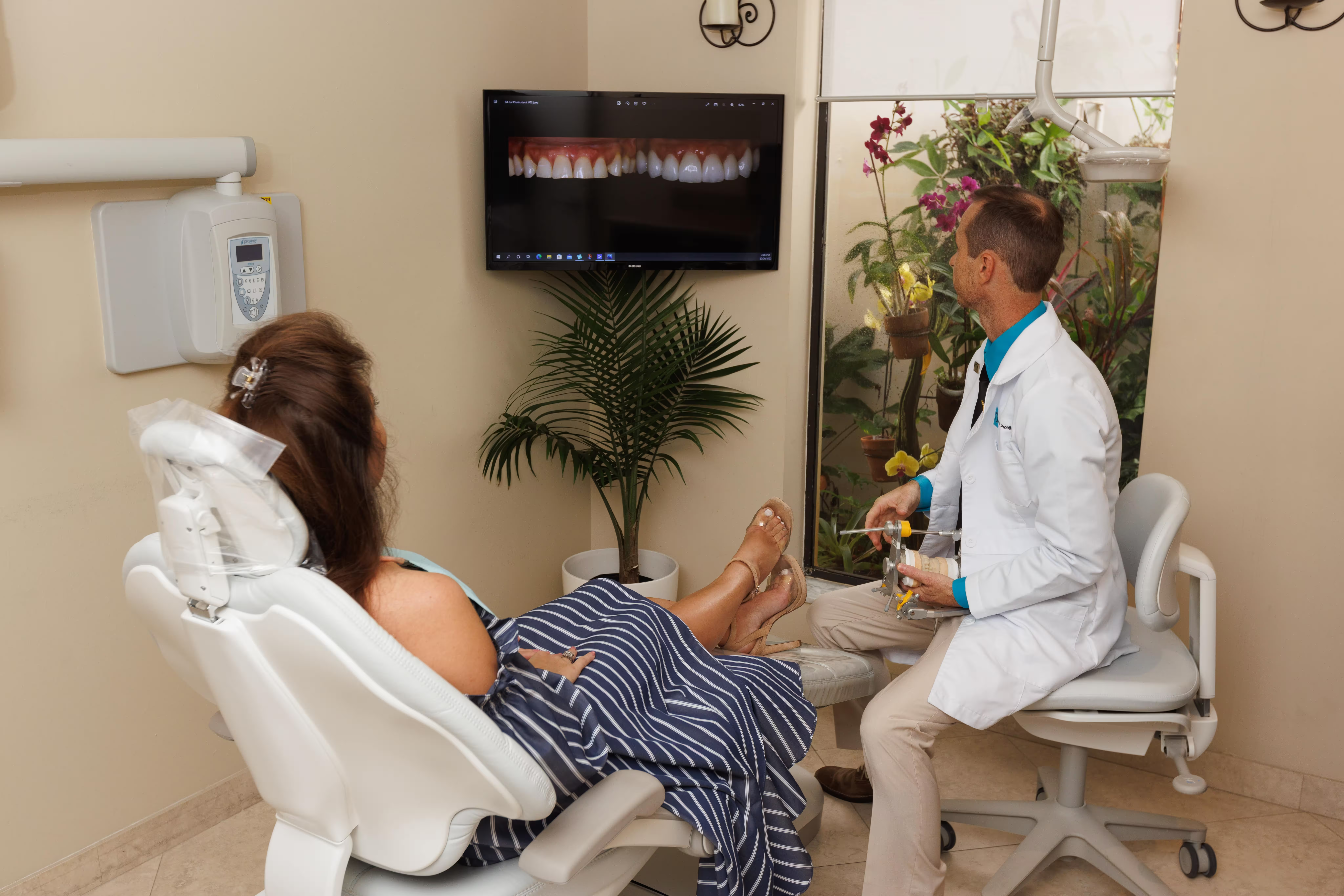A smile can light up a room, but damaged, worn, or weakened teeth may leave you feeling hesitant to share yours with the world. Whether your tooth has suffered from decay, fracture, or extensive wear, dental crowns offer a reliable path to restore both function and beauty to your smile.
At Ocean Breeze Implant & Esthetic Dentistry, Dr. Nicholas Goetz and our skilled team understand how important your smile is to your confidence and daily life. As one of only 150 maxillofacial prosthodontists in the United States, Dr. Goetz brings advanced training and precision to every crown procedure, helping patients in Delray Beach achieve the strong, beautiful smiles they deserve.
What Are Dental Crowns
Fixed and removable prosthodontics treatments like dental crowns serve as protective caps custom-designed to completely cover a damaged tooth. Think of a crown as a helmet for your tooth, providing strength and protection while restoring its natural appearance and function.
Crowns become necessary when a tooth has been significantly compromised by decay, injury, or wear. Unlike fillings that repair small areas of damage, crowns encase the entire visible portion of the tooth above the gum line. This comprehensive coverage makes crowns ideal for teeth with large fillings, cracks, or structural damage too extensive for other restorative options.
The crown procedure typically requires two appointments. During your first visit, Dr. Goetz carefully prepares the tooth by removing damaged portions and reshaping it to accommodate the crown. He then takes precise impressions to ensure your new crown fits perfectly and matches your natural teeth. A temporary crown protects the prepared tooth while your permanent restoration is crafted in a dental laboratory.
Types of Crown Materials
Modern dentistry offers several crown materials, each with unique benefits suited to different needs and preferences. Porcelain crowns remain the most popular choice for front teeth because they closely mimic the translucency and color of natural enamel. These esthetic restorations blend seamlessly with your smile and resist staining over time.
For back teeth that endure heavy chewing forces, porcelain-fused-to-metal crowns provide exceptional durability. The metal foundation offers strength while the porcelain exterior maintains a natural appearance. All-metal crowns, typically made from gold or other dental alloys, deliver unmatched longevity and require minimal tooth reduction, though they’re primarily used for back teeth due to their metallic appearance.
Zirconia crowns represent the latest advancement in crown technology, offering both remarkable strength and natural beauty. This biocompatible material works well for both front and back teeth, providing excellent durability without compromising esthetics.
The Crown Treatment Process
Your crown journey begins with a thorough examination and consultation. Dr. Goetz evaluates the damaged tooth using advanced imaging technology, discussing your treatment options and addressing any concerns. This initial assessment ensures we choose the best approach for your specific situation.
During the preparation appointment, local anesthesia ensures your comfort while Dr. Goetz carefully reshapes the tooth. The amount of tooth structure removed depends on the chosen crown material and the extent of existing damage. After preparation, detailed impressions capture the precise contours needed for your custom crown.
Your temporary crown serves as protection and maintains function while the permanent restoration is created. We’ll provide specific care instructions to help you avoid any issues during this interim period. When your permanent crown is ready, typically within two to three weeks, you’ll return for the final placement appointment where Dr. Goetz ensures perfect fit and bite alignment before permanently cementing the crown.
Caring for Your New Crown
Proper care helps your crown provide years of reliable service. While crowns resist decay, the underlying tooth and surrounding gums still require consistent attention. Regular brushing with fluoride toothpaste and daily flossing remove plaque buildup around the crown margins where bacteria commonly accumulate.
Avoid using your crowned tooth as a tool for opening packages or cracking nuts, as excessive force can damage even the strongest crown materials. If you grind or clench your teeth, especially at night, discuss a custom mouth guard with our team to protect both your crown and natural teeth.
Regular dental checkups allow Dr. Goetz to monitor your crown’s condition and address any issues early. Professional cleanings remove buildup your home care routine might miss, while examinations ensure your crown continues functioning properly. Most crowns last 10-15 years or longer with proper care and maintenance.
Experience Crown Excellence with Dr. Nicholas Goetz
Dental crowns offer a proven solution for restoring damaged teeth to full function and natural beauty. With proper treatment planning and skilled placement, your crown can provide decades of reliable service while enhancing your smile’s appearance.
Dr. Nicholas Goetz’s advanced training as a maxillofacial prosthodontist, combined with his fellowship at UCLA, brings exceptional precision to every crown procedure. His dedication to continuing education through the Pankey Institute ensures you receive the most current techniques and materials available. Whether you need a single crown or multiple restorations, our Delray Beach team provides personalized care focused on achieving optimal results. Contact Ocean Breeze Implant & Esthetic Dentistry at (561) 265-1998 or visit our contact form to schedule your consultation and discover how a crown can transform your smile.





